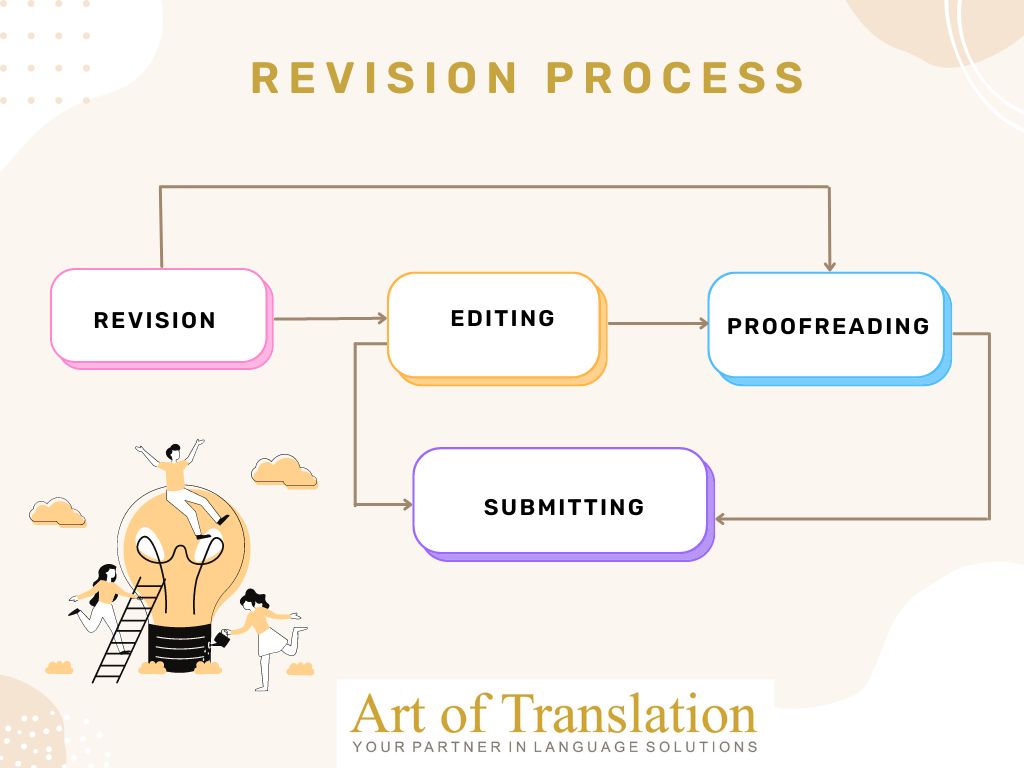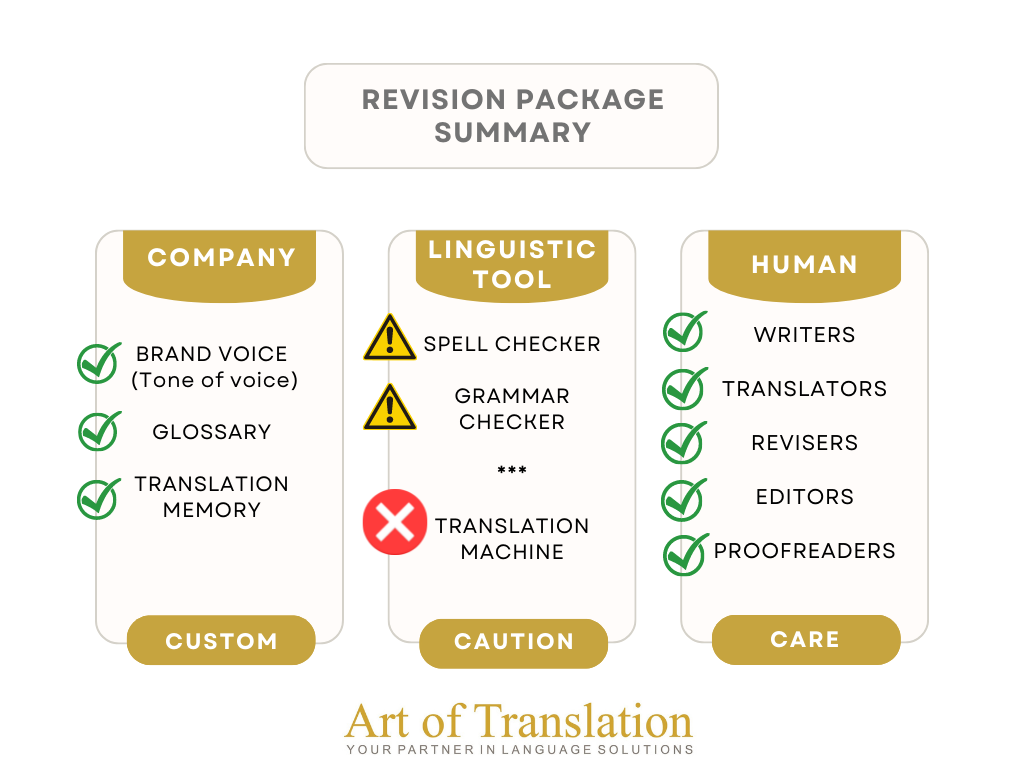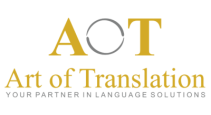Do you remember when your teacher would tell you to proofread your assignment before handing it over?
Well, we all make mistakes, don’t we? That’s why we’re perfectly human. That’s also why revising, editing, and proofreading the content we produce is fundamental. Even the most eminent people do this for their speeches, articles, etc. Sometimes it involves a countless number of editions.
If you have already used a language services provider, you may have been asked to choose between proofreading, revising, or editing services. Either it was for bilingual or monolingual content. And you probably asked yourself what the real difference was between them. Plus, the prices are generally not the same.
It can indeed be confusing. The definitions are blurry. And ultimately leave you with the question: “Which service do I need?”
We get it. So, we’ll break these services down and give you some tips to help you decide the service you need for your content.
The ABC: Definitions and Basis
Revision
As per Merriam-Webster dictionary, “to revise” means “to look over in order to correct or improve”. And for Oxford Languages, it’s “to re-examine and make alterations to”.
The act of revising written material is generally the first step after the first draft. That’s when the reviser will make changes to the structure, the content, and the wording to improve the organization of ideas and awkward phrasing. The goal is to ensure the writing is clear, coherent, and correct.
At the end of the revising phase, the content and the structure of the written material shall be finalized.
Editing
As per Merriam-Webster dictionary, “to edit” means “to alter, adapt or refine, especially, to bring about conformity to a standard or to suit a particular purpose”. And for Oxford Languages, it’s to “prepare (written material) for publication by correcting, condensing, or otherwise modifying it”.
The act of editing written material comes after the revision phase. It’s a detailed review, sentence after sentence. The editor focuses on improving the overall readability, flow, and accuracy by targeting the language and expression used. At this stage, the linguist doesn’t work on the content as per se. They only look for consistency and clarity of thought.
At the end of the editing phase, the goal is to have the language enhanced, the expression clearer and inconsistencies removed.
Proofreading
As per Merriam-Webster dictionary, “to proofread” means “to read and mark corrections in”. For Oxford languages, it’s “to read and mark any errors”.
The act of proofreading written material is the last step of the revision process. We could call it a surface review that aims to correct spelling, grammar, punctuation, and formatting errors. The linguists will also check for consistency of the language used (i.e., the same terms used throughout the documents) and other language mistakes, such as typographical ones.
At the end of the proofreading phase, the goal is to have the written material ready for submission or publishing.
From A to Z: The Revision Process
The lingo terms can be confusing. We agree. The whole revision process includes three steps, and one of them is called revision. See below the theoretical workflow of the revision process:
Revision ⇒ Editing ⇒ Proofreading ⇒ Submitting
In real life, this workflow is different from one company to the other, depending on their needs and resources: is the content produced internally or externally? Does your company have allocated resources to linguistics, such as an internal language department?
It will also be adapted based on the nature of the content: is it a blog post? A new contract? A revised manual? Does your company need to revise monolingual content or bilingual content?
We designed the diagram below to show different revision process scenarios:

It’s important to note that a revision process doesn’t need to start from scratch each time. There are tools that you can build over time to make the revision process efficient. But some instruments need to be manipulated carefully to obtain the desired effect.
Let’s dive into the revision process toolkit. It will help to define the revision services you may need.
Your Toolkit: the Right Ingredients for the Best Services
Like with any winning recipe, you need the right ingredients. The service you’ll need will depend on how well-equipped you are. We’ll review a few tools to make your revision process efficient.
Companies’ Tools
1. Brand Guide (Tone of Voice)
It shall be the base of any content your company is producing. It doesn’t matter if you are in one or multiple markets. You want your company to be consistent through all communication channels, from your internal SOP to your Facebook ads. Your tone of voice reflects your company’s personality.
That’s why defining your core message as a company and the way you communicate it is critical. It’s a powerful tool that guides anyone working on your content from the creation to the publishing phase. Revisers, editors, and proofreaders will use it to ensure your content aligns with your tone of voice.
And it will help you to say the same thing to your employees, suppliers, clients, and other stakeholders.
2. Glossary
Which specific terms do you want to use for your company, brand, products, and services? It’s important to compile them in a glossary. Then all people working on your content use the same terms. This tool will help maintain consistent terminology and prevent any costly confusion in your messaging.
Afterwards, you can get the glossary translated into the languages of the markets where your company is doing business. It’ll keep your brand voice consistent across all markets and ensure that all linguists (from translators to proofreaders) use the terms you approved for your company, brand, products, and services.
3. Translation Memory
This tool is for bilingual content. A translation memory is a database that stores words, sentences and even paragraphs previously translated. It pairs matching source and target units. When translators get similar content, the TM looks for matches. They will also add new content over time to the database.
Once you get a final translation, you’ll approve it. The next time you use this content, you’ll make your revision process faster by using this database and ensure consistency with previous communications.
Linguistic Tools
1. Spell checker
Nowadays, we all have a spell checker (if not two) set up on our computers. True! They are practical and helpful. But they are only efficient for common errors. Therefore, you shouldn’t trust them 100% for your revision process. And here is why:
- Languages have specificities and standards. For example, British English does not have the same spelling standards as American. Spell checkers may not make the difference.
- Spell checkers may not identify specific or technical terms related to your company’s business, because they are not in their dictionary.
- Spell checkers don’t catch some typo errors. If you tape “though” instead of “through”, it won’t identify it. But it may change the meaning of your sentence.
2. Grammar checker
Grammar checkers sound attractive and a time-saver. But there is a but. Like the spell checker’s dictionary, the number of rules implemented in a grammar checker will depend on the language and the sophistication of the tool. But they are mainly rudimentary. Here are some pitfalls:
- For complex sentence structure, they may identify errors where they are none. Checkers are just not refined enough to properly analyze the language’s particularity.
- Grammar checkers don’t always get the correct agreement, especially for words that can be names or verbs (i.e., end or ends). They may miss homonyms too.
- They will make suggestions that may change the whole meaning of a sentence. They don’t comprehend the context like a human.
3. Human touch
It’s the final ingredient, but not the least. Linguists will have the context of the content in mind and know your tone of voice. They’re aware of cultural nuances and expressions. They will master the ins and outs of their language.
All the tools mentioned above will support linguists and make their work more efficient. But they cannot replace the human impact on consistency, readability, and accuracy. And those elements are critical to giving your content the effect desired. Plus, the human revisers will be the first readers of the written material. Their feedback and corrections will ultimately enhance your content for the end reader.

The manual (or recipe) to pick the service you need
Did we shine some light on the revision process up to now? Now that we have set the basis, we will walk through the main questions you should ask yourself to choose the service you need.
Questions to ask
- What is the nature of the content I need to revise? Is it creative, technical, or legal?
- Where was the content created? Internally, externally? Is it a revision of previous material?
- Which tools do I have? Do I have a glossary, a language department, etc.?
- Will the content be translated into other languages?
- What is left to do? Do I need to work on the content, the readability, or the surface?
The revision phase focuses on the initial content. It’s the content’s finalization step. So, you want to get the experts in the related fields involved.
The editing phase aims to enhance the language. Clients often ask for the help of a language provider at this stage. An external eye is strongly recommended to catch any inconsistency and awkward formulations.
The proofreading phase is the last check. The goal is to make your copy spotless and showcase your professionalism on top of your know-how.
Case of translated content
First, we recommend sending your finalized content in the source language to avoid extra translation costs for each change to the original material.
A revision phase is generally required with the translation/localization of creative content to ensure the translator capture the main message and tone of voice. Otherwise, once the translation is completed, the norm is to move the project to an editing phase, especially if the content is technical, complex, or creative.
And finally, in all cases, your content should be proofread to capture any random mistakes left.
Example of a monolingual revision process
Imagine you want to produce a case study to post on your company website. You want to write and revise the content internally. In fact, you have all the data. Plus, you know precisely what you want to communicate. After all, you’re the specialist on the topic.
But you know that you’re not a language expert. So, once you have a final draft, you look at externalizing the editing and proofreading phases to ensure the language is not affecting the impact of your case study. Therefore, your external revision process will only include two steps: editing + proofreading.
Example of a bilingual revision process
Let’s use the perfect example of the employee year-end evaluation review. Imagine that your company has offices in 5 countries with different languages.
You will probably reuse the evaluation review content from the previous years and update the English copy based on this year’s events. With your HR department, you will edit and proofread the final content. Then, you will send for translation this year’s evaluation review.
Your service provider will most likely use the copy of last year’s evaluation and update it. And then, a final proofreading phase may be enough. In this case, you jump from the translation to the proofreading phase. (Given that your company has a translation memory and a glossary).
AOT, at your service
AOT is a translation agency that offers boutique services. We take pride in building partnerships with our clients to serve you better.
If you’re unsure about the revision services you need, we will help you define the best solution based on your content and resources. Contact us to learn more.
References
https://www.scribendi.com/advice/editing_versus_proofreading.en.html
https://www.scribendi.com/advice/what_is_proofreading.en.html
https://www.merriam-webster.com/dictionary/revising
https://www.merriam-webster.com/dictionary/editing
https://www.merriam-webster.com/dictionary/proofreading
https://en.wikipedia.org/wiki/Translation_memory
https://jobsforeditors.com/blog/pros-and-cons-of-spell-checkers.html
https://livecustomwriting.com/blog/essay-grammar-check-pros-and-cons
